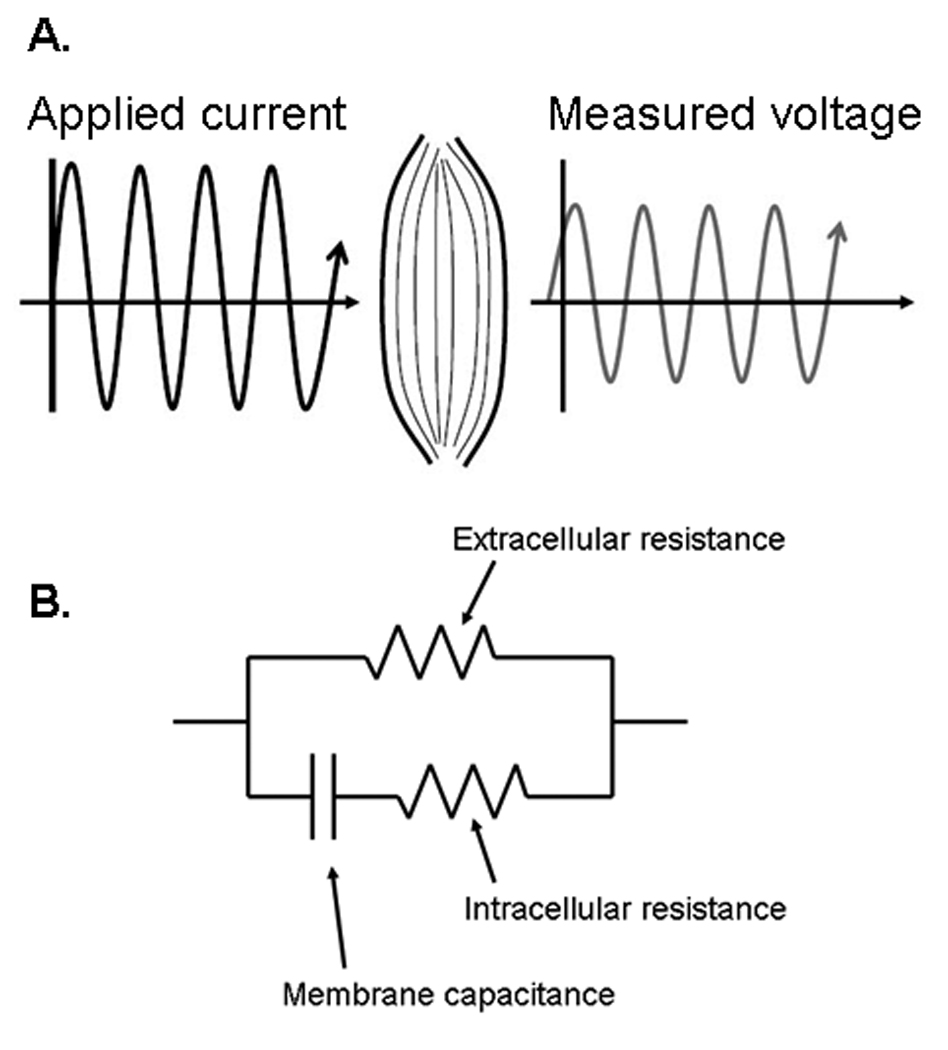Figure 2.

A. Basic concept of electrical impedance testing. Electrical current of a known frequency, amplitude is injected into a tissue. The tissue impacts the applied electrical current, reducing the measured voltage’s amplitude, secondary to the tissue’s resistance and slightly altering its timing, secondary to the tissue’s capacitance. The changes in electrical current flow reflect the properties of the tissue and thus can reveal information about tissue health or pathology. B. The “standard” basic equivalent circuit of bioelectrical impedance. The capacitor represents the cell membranes (in the case of muscle the sarcolemma) and the resistors the extra- and intra-cellular resistance. Although simplistic, this circuit diagram provides a basic handle with which to understand why changes in cellular structure may result in changes in the measured impedance.
